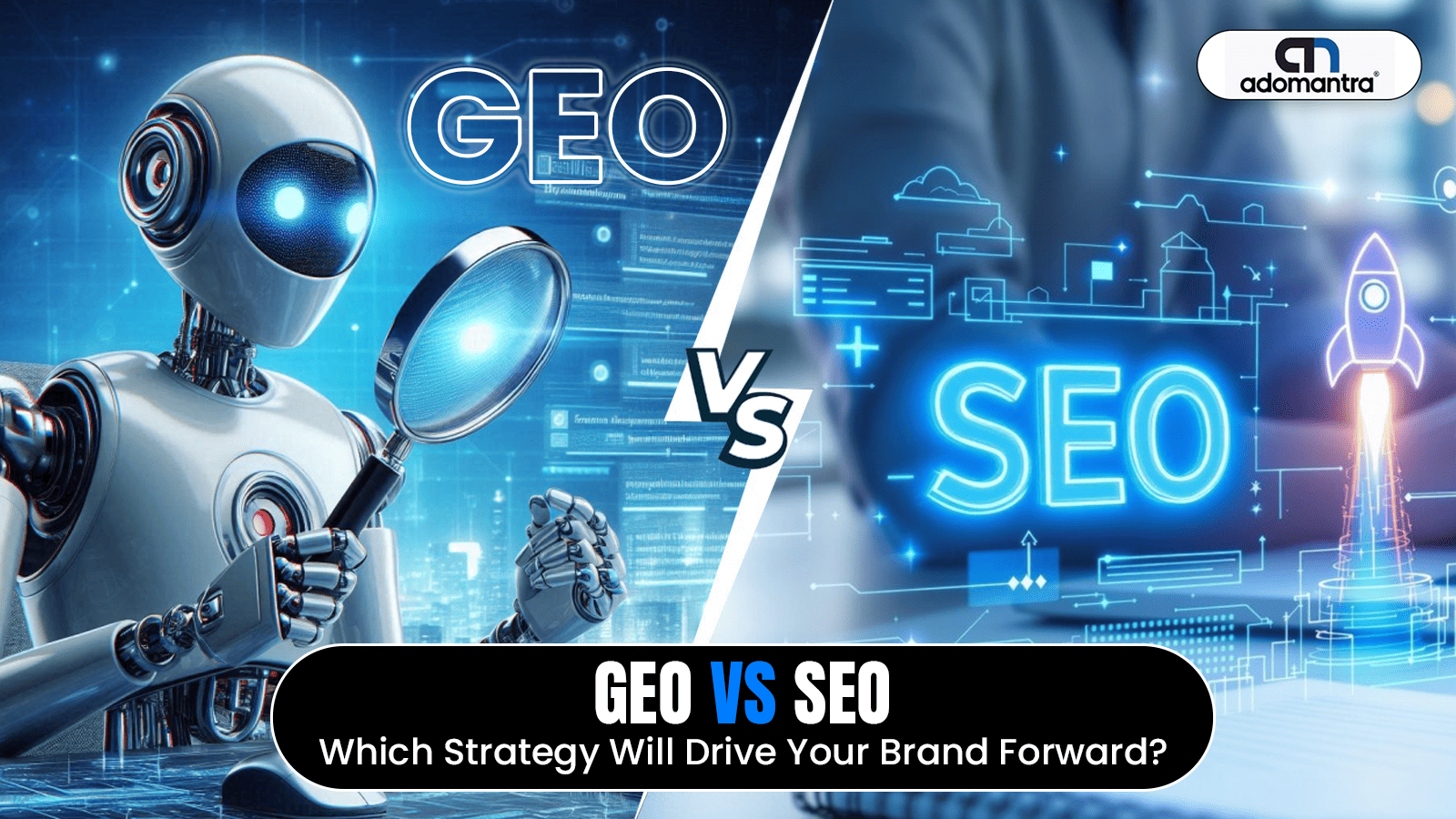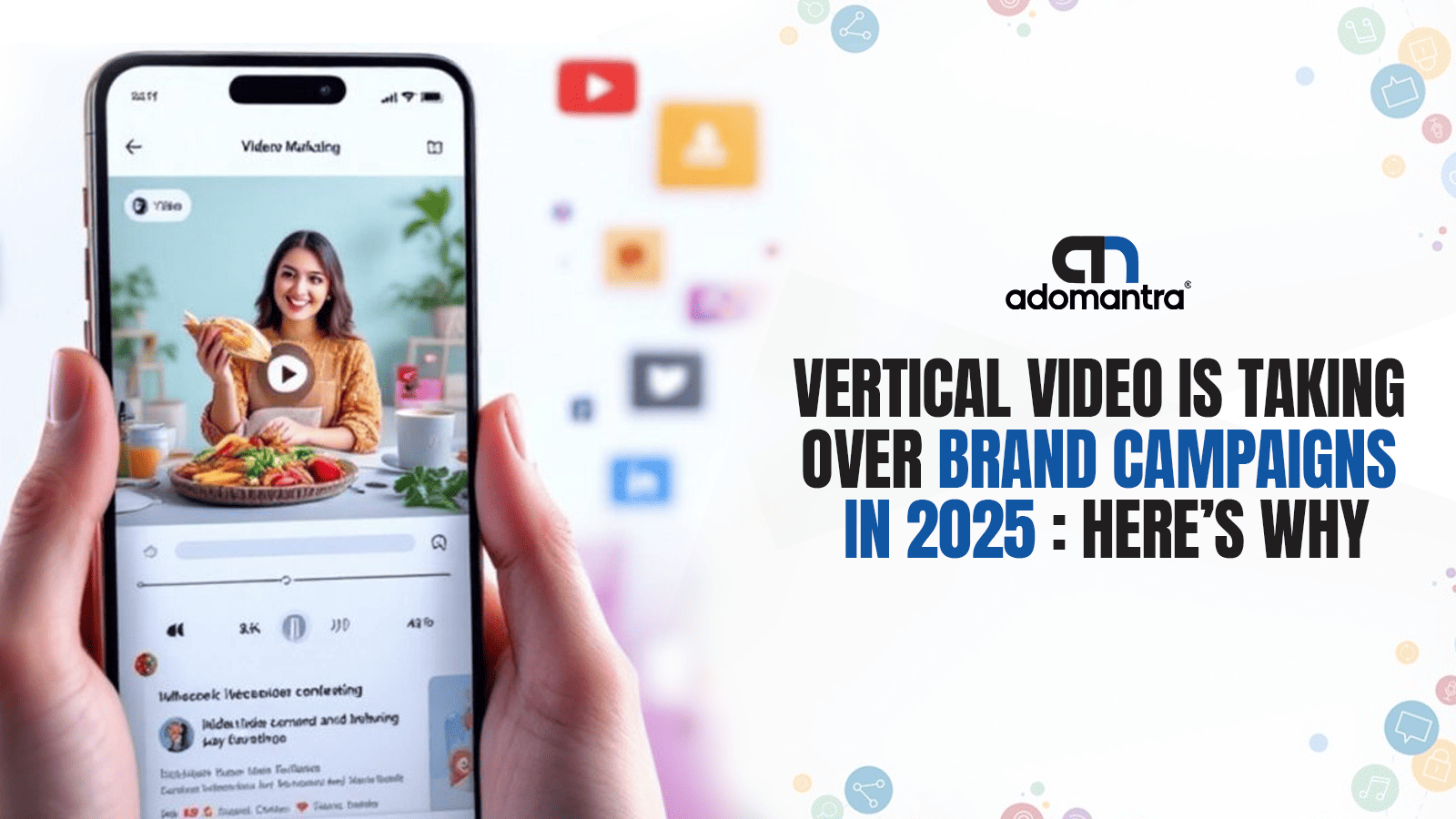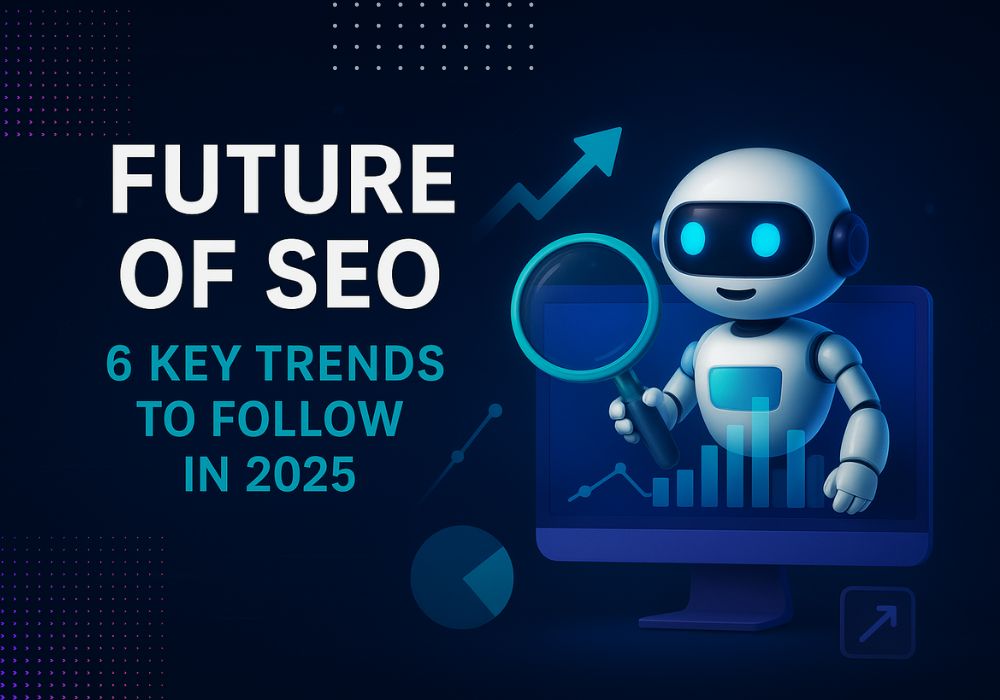
Future of SEO: 6 Key Trends to Follow in 2025
SEO has undergone seismic shifts in recent years—from keyword-heavy tactics to the mobile-first era, and now a tectonic move toward AI-driven search. As we step into 2025, the future of SEO lies not just in ranking for keywords, but in making your content visible in a world dominated by AI-generated answers and zero-click behavior. Google’s AI Overviews, ChatGPT, and tools like Gemini and Perplexity are changing how users search—often dispensing answers right on the results page.
This guide will walk you through six transformative SEO trends for 2025, each backed by real data and examples to help you adapt and excel in this new landscape.
1. Generative Engine Optimization (GEO): SEO’s New Evolution
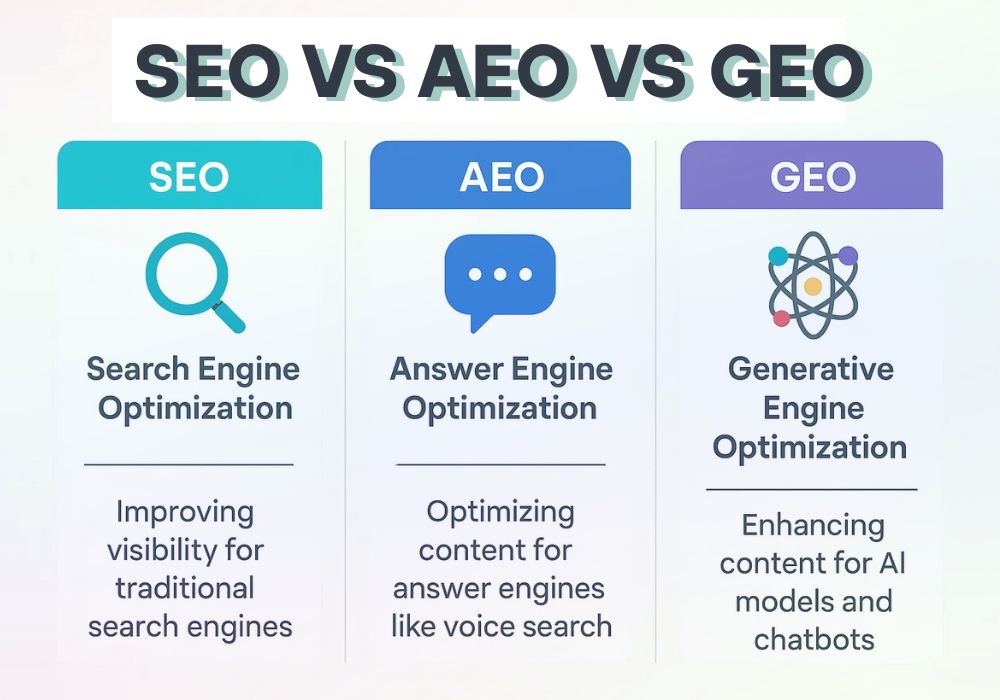
Generative Engine Optimization (GEO) is the next stage of SEO designed for AI-powered search engines (like ChatGPT, Perplexity, You.com, and Google’s Search Generative Experience).
Unlike traditional SEO, which optimizes content for search engines like Google by focusing on keywords, backlinks, and rankings, GEO focuses on making your content discoverable, relevant, and usable for generative AI models that answer user queries directly.
Why GEO Has Emerged
- GEO’s theoretical roots stem from a 2023 research paper introducing this concept and industry buzz has rapidly increased since then.
- Publishers and marketers are responding with strategies—like using llms.txt, AI-specific metadata, structured content, and short, answer-first formats—to earn visibility in AI-generated responses.
For instance, content optimized via FAQ schema, HowTo markup, and bulleted lists is more likely to be pulled into AI summaries.
GEO in Action
- Startups like Asva AI and Siftly are helping brands optimize for AI search visibility—not just keyword rankings.
- Wix’s new AI Visibility Overview tool provides insights into how often sites are cited by AI and helps monitor brand sentiment and query trends.
New York Magazine's article “SEO Is Dead. Say Hello to GEO.” explains the need for concise content—structured and formatted for AI extraction instead of human scanning.
How to Optimize for GEO
- Use clear, fact-based content and structured data (FAQPage, HowTo schema, tables, bullet lists) for AI comprehension.
- Begin sections with succinct answers (1–2 lines), then expand—AI tools often extract the lead for summaries.
- Develop topical authority via comprehensive content hubs and internal linking (as seen in examples from SEO2Connect).
- Employ multimodal optimization—use images, videos, and audio with proper schema (ImageObject, VideoObject) to appear in AI responses.
- Monitor your AI visibility using tools like Wix’s AI Visibility Overview or offerwall analytics to guide strategy.
2. Zero-Click Searches & AI Overviews: The New Visibility Challenge
Zero-click searches and AI overviews are becoming the biggest visibility challenge for brands in 2025. A zero-click search happens when users get their answers directly on the search results page or through AI-powered summaries, without visiting any website. With Google’s AI Overviews (part of its Search Generative Experience) and tools like ChatGPT or Perplexity, users can now access complete responses instantly, reducing the need to click links.
While this improves user convenience, it creates a challenge for businesses that traditionally relied on website traffic. Instead of focusing only on rankings, brands now need to ensure their content is trusted, structured, and authoritative enough to be cited by AI engines. This shift means visibility comes not from clicks but from mentions in AI-generated answers, making Generative Engine Optimization (GEO), structured data, and E-E-A-T signals critical for staying relevant in an AI-first search world.
Changing Traffic Patterns
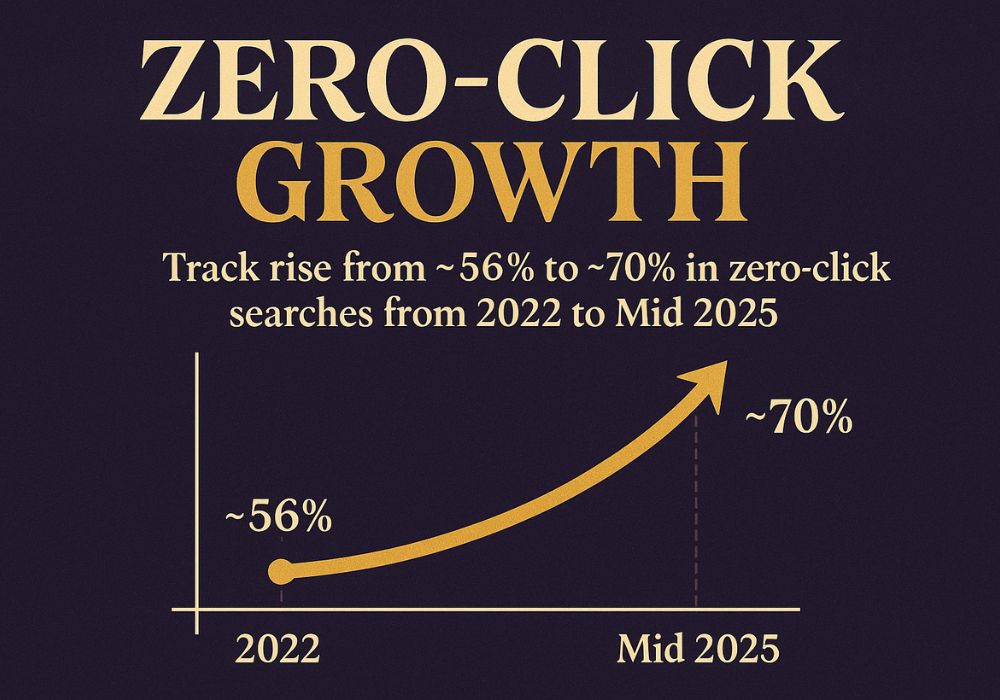
- SimilarWeb reports show news site traffic dropped from over 2.3 billion visits in mid-2024 to under 1.7 billion by May 2025. Zero-click rates rose from 56% to 69% in that period.
- The trend, dubbed “Google Zero,” signals a shift toward AI-driven summaries and fewer clicks—increasingly threatening organic traffic.
- Experts estimate 80% of users complete 40% of searches without any click, illustrating how entrenched zero-click behavior has become.
Impact on Brands & Publishers
- Even with increased ChatGPT referrals—growing from under 1 million in early 2024 to over 25 million in 2025—it’s not enough to offset the decline from Google traffic.
- Publishers are shifting strategies—focusing on direct relationships via subscriptions, branded journalism, newsletters, and social presence to reduce Google dependency.
Adjusting Strategy
- Optimize for featured snippets, People Also Ask (PAA), knowledge panels, and rich cards to stay visible in zero-click SERPs.
- Track metrics beyond clicks, such as impressions, brand mentions, and engagement signals—critical in a zero-click world.
Pivot focus toward brand awareness through content consumed directly on SERPs, retargeting, and omnichannel engagement.
3. Hybrid AI + Human Content Strategy
A Hybrid AI + Human Content Strategy combines the speed and scale of AI tools with the creativity, credibility, and emotional intelligence of human experts. In today’s AI-driven search landscape, businesses can’t rely solely on automated content because generative engines value accuracy, authority, and originality. AI is powerful for tasks like keyword research, topic generation, content structuring, and even drafting first versions. But human input ensures fact-checking, nuanced storytelling, brand voice alignment, and the real-world expertise that search engines and AI assistants prioritize under E-E-A-T (Experience, Expertise, Authoritativeness, Trustworthiness).
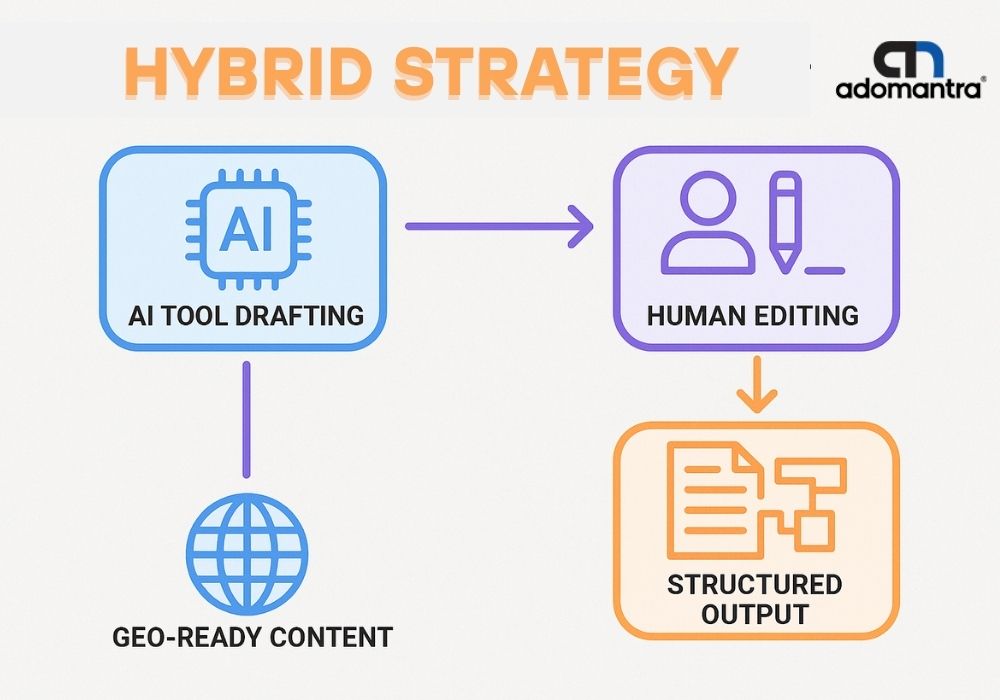
By blending both, companies can consistently produce high volumes of relevant content while maintaining trust, authenticity, and the ability to connect with readers. This hybrid approach not only future-proofs SEO but also strengthens visibility in AI overviews and zero-click environments, where being cited as a reliable source matters more than just ranking.
Rising AI Influence
- WSJ reports that 80% of searches are partially handled by AI, with 42% using generative tools for shopping.
- Organizations with mature SEO strategies—integrating AI—see far more performance gains, with 91?knowledging SEO’s positive impact.
Human-Infused AI Content
- AI excels at research, structure, and draft creation—but human oversight is crucial to add original insights, brand voice, and factual accuracy.
- Think of AI as your assistant, not replacement. Combine AI efficiency with human storytelling, data, and brand direction to create superior content.
Example Use Case
A tech brand used AI tools to gather draft content, but only after human editing and expert validation did their content become rich enough to be cited by Perplexity and Google's SGE—boosting engagement by nearly 50%.
4. E-E-A-T & Brand Authority
E-E-A-T (Experience, Expertise, Authoritativeness, and Trustworthiness) has become the cornerstone of building brand authority in the age of AI-powered search. Generative engines and Google’s AI Overviews increasingly rely on these signals to decide which content to highlight and which brands to cite. While traditional SEO rewarded keyword usage and backlinks, today’s environment demands proof of real-world experience, subject-matter expertise, credible authorship, and transparent trust markers like citations, reviews, and consistent brand presence across platforms.
For businesses, E-E-A-T is no longer just an SEO guideline—it is a trust signal to AI, ensuring that your content is not only indexed but also trusted enough to be included in zero-click answers and AI summaries. Brands that invest in expert-led content, showcase authority through research and case studies, and build trust with authentic engagement are more likely to win visibility in this AI-first search ecosystem.
Why Authority Matters for AI
- AI platforms favor reputable sources. Structured data highlighting credentials helps reinforce trustworthiness.
- Content from authoritative sources—think Mayo Clinic or Investopedia—often surfaces ahead of competitors in AI-generated answers.
Building Trust
- Highlight author credentials, publish expert-byline content, and use author schema to reinforce who stands behind your content.
- Earn brand mentions and authoritative backlinks from trusted domains to further cement your entity in AI knowledge graphs.
Regularly update content with latest insights—freshness signals reinforce both SEO and GEO relevance.
5. Voice & Conversational Search Optimization
Voice and Conversational Search Optimization is becoming an essential part of modern SEO as users increasingly interact with AI assistants, smart speakers, and mobile voice search. Unlike traditional text-based queries, voice searches are longer, more conversational, and framed as natural questions—for example, “What’s the best diet plan for PCOS?” instead of “PCOS diet plan.” Optimizing for this shift means creating content that mirrors everyday language, incorporating long-tail keywords, FAQs, and natural sentence structures that AI engines and voice assistants can easily interpret.
Structured data, local SEO, and concise, direct answers also play a crucial role, as voice assistants typically return a single result rather than a list of options. For brands, this means preparing content that not only ranks but also sounds natural when read aloud, positioning them as the go-to authority in voice-driven and conversational AI search experiences.
Market Dynamics
- Smart speaker usage increased by 7.4?tween 2022–2024, and 35% of Americans now own one.
- Voice searches are increasingly common—predictions suggest over 50% of all searches could be voice-based by 2025.
Optimization Tactics
- Use question-style headings and FAQs to mirror natural language queries.
- Write in conversational tone—e.g., “What’s the best way to train a puppy?” rather than “puppy training tips”.
Target local, “near me” phrases and leverage local SEO signals—Google My Business, local reviews, business info structuring—all vital for voice search relevance.
6. User Experience & Core Web Vitals
`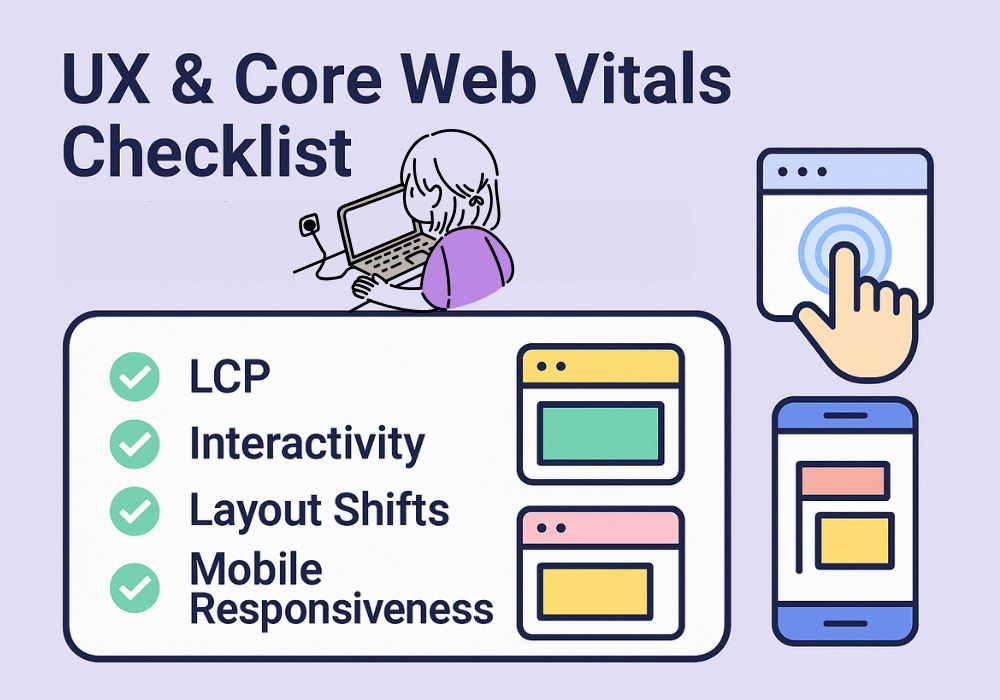
Even as AI dominates the front-end, UX excellence remains foundational—especially under Google's refined Core Web Vitals. With Google’s Core Web Vitals 2.0, user experience has become a measurable technical benchmark that directly impacts search rankings, engagement, and conversions. These updated metrics go beyond speed, focusing on visual stability, responsiveness, and interactivity, ensuring websites feel smooth and reliable for users.
Continued Importance
- Search engines still reward faster, smoother, and mobile-optimized experiences—essential for retention and ranking Trueffle.
- In environments where users don't click through often, ensuring seamless page experiences when they do matters even more.
Optimization Actions
- Prioritize page load speed: compress images, use lazy loading, reduce code bloat, and optimize fonts.
- Ensure responsiveness and mobile-first design—slow, clunky experiences damage both search opportunity and trust.
- Improve accessibility with clean markup, alt text, readable layouts, and semantic HTML to serve both users and AI crawlers.
Concluding Thoughts
As 2025 approaches, SEO is evolving into a multi-dimensional discipline—one where AI visibility, brand trust, technical excellence, and user-centric content blend seamlessly. Here's your battle plan:
- Optimize for AI: Be structured, concise, and AI-citable—embrace GEO.
- Adapt to zero-click norms: Win the snippet game and rebuild audience pathways.
- Humanize AI-generated content: Use human insight to elevate quality and trust.
- Build trust strategically: Showcase E-E-A-T, keep your brand front-of-mind.
- Speak the user’s language: Optimize for voice, conversation, and intent.
- Never neglect UX: Because conversions happen when the page delights—especially when AI drops them there.


